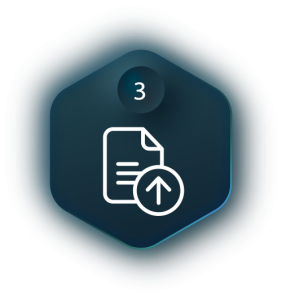Data Collection
In this initial stage, all necessary data is gathered. Typically, users already have access to these data points or retrieve them from specific sources such as ERPs, cost spreadsheets, web reports, and others. Two data sources (Source A and Source B) are required for the reconciliation process in Auditar100. Examples include matching credit card payments with sales, reconciling expense ledgers with purchase invoices, or comparing ticket sales with occupied seats.
Data Organization
The collected data undergoes preparation to improve quality and facilitate more accurate matching. This step, known as ETL (Extract, Transform, and Load), involves refining data by removing unnecessary files, records, or columns, and even creating new columns or reformatting the data. While ETL might sound technical, most users engage in these activities intuitively without realizing its name.
Upload
Once organized, the data is uploaded into the system. This step ensures the files are ready for reconciliation.
Data Identification
With the data uploaded, users can classify each data type for comparison (e.g., number, date, text). This process, also known as Data Typing, provides the system with critical elements influencing how the data is processed during reconciliation. For instance: Numerical data is required for calculations; Dates must be identified for period comparisons.
Defining Rules
Users establish how the data should be compared, enabling the system to process it and determine if it is reconciled. Auditar100 uses a round-based rule system, where each round includes one or more rules justifying why specific data sets are reconciled. For example: To reconcile Revenue Ledgers with outgoing invoices, a round may include rules matching the date, invoice number, and amount; Most reconciliations involve multiple rounds for comprehensive results.
Reconciliation
Auditar100 processes the data, applying the rules defined in each round. Once a data point is reconciled, it is marked and excluded from further reconciliation attempts.
Reports
At the end of the process, the system generates reports to help users analyze the reconciliations. These reports include: Reconciliation status (matched or unmatched); Identification of which round and rules led to the reconciliation; A detailed map of matched records, transparently connecting each entry to its corresponding source.







